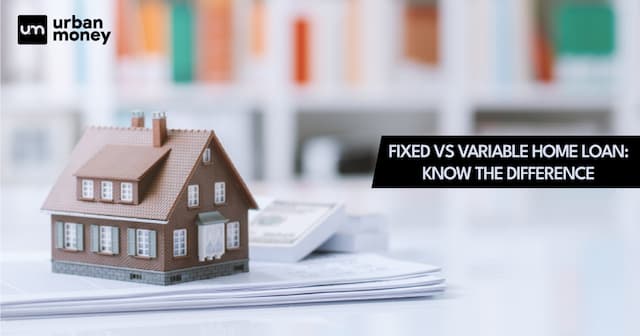All About Loan-to-Value Ratio

Since, citizens have seen a monthly loan value rate increase, with mortgage lenders having to pass it on their customers. As an outcome, the Australian government has set limited loan-to-value ratios on property value that have risen compared to previous years. Loan to Value Ratio(LVR) allows you to calculate the amount of money a mortgage company. So if you have a mortgage or are considering getting one, let’s learn the impact of significant LVR mortgages.
What is LVR?
When applying for a home loan, you will run across the term Loan to Value Ratio (LVR). The LVR refers to the loan-to-value ratio. It is the loan sum divided by the worth of the asset you have chosen as security. Moreover, when reviewing a home loan application, lenders analyse various factors, including the debtor's LVR. In addition, it evaluates whether a borrower's insurance is required or you are eligible for the rate of interest.
How to Calculate LVR?
The LVR is calculated by dividing the loan amount by the buying cost or worth of the asset you are purchasing.
The formula used is to calculate LVR:
LVR = (Amount loan / Property’s Value) x 100
For instance,
If you have taken a home loan of $ 500,000 and the property’s value is $600,000, then your LVR will be 83%.
Do I Use the Valuation or Purchase Price?
Real estate value ratio is needed for various purposes, like finance, sales, marketing, investing, research, homeowners insurance, and revenue. Calculating the selling or buying cost of the property can be helpful for most individuals.
However, the best method would be the LVR to obtain a pre-purchase valuation before making a deal. This is because, in valuation, you will get to know the worth of the asset. You can bargain for a sensible purchase price, reducing the chance of being required to pay more for a home than its value.
How do Banks Calculate the LTV for a Refinance?
An LTV ratio is evaluated by dividing the amount borrowed by the appraised property value.
The formula used to calculate loan value for LTV:
LTV Ratio= MA/ APV
Where,
MA stands for Amount of the Mortgage
APV denotes Appraised Property Value
For example,
If you buy a house appraised at $100,000 for its appraised value and make a $10,000 down payment, then you need to borrow $90,000. The output of the LTV ratio will be 90%.
Do Lenders Always Value the Property?
Real estate value ratio is needed for various purposes, like finance, sales, marketing, investing, research, homeowners insurance, and revenue. Calculating the selling or buying cost of the property can be helpful for most individuals.
However, the best method would be the LVR to obtain a pre-purchase valuation before making a deal. This is because, in valuation, you will get to know the worth of the asset. You can bargain for a sensible purchase price, reducing the chance of being required to pay more for a home than its value.
Will My Property Need a Valuation?
This is one of the most common methods for determining value ratio to purchase property. The value is determined based on the purchasing price, subject to homes acquired received or sold within the same market area.
LVR aids in determining the true value of an asset during the selling and acquisition process. It also helps in calculating the tax, the return on investment, income generation possibilities, and lending concerns. However, you will need value ratio for the property whenever you need to know an estate's current value. Further, you may need assistance with purchasing a home using a mortgage assistance loan and how to repay the debt, refinance, or sell the property.
What is the Maximum LVR that I can Borrow?
Each lender has its own limited loan value for buying a house. Some lenders have a LVR limit of 90% or less than 80%. However, you will need a 10% down payment to qualify for a home loan. On the other hand, If you have a maximal LVR of 95%, which means you may get a home equity loan that requires only a 5% down payment.
Is it Possible to Borrow 100% LVR?
The price of the Lenders Mortgage Insurance (LMI), which is charged to the loan balance, is not limited. As a result, the extra LMI might cost up to 5% of the mortgage balance, raising the total LVR to 100%. As a result, a 100% house loan is obtained.
What is LMI and When is Chared?
Lenders Mortgage Insurance (LMI) is a payment that mortgage lenders pay. Generally, a lender needed LMI, if the client is applying for a loan for more than 80% of the estate's purchase cost. In future, LMI will safeguards the lender instead of the borrower, when the default occurs or fails to fulfil their debt repayment responsibilities. Although LMI can be repaid in full at the resolution, most mortgage companies will add it to the loan's total amount. Moreover, it can be earned in addition to the monthly loan debt repayment.
However, LMI is determined based on the percentage of the loan balance. The lender's fee increases in proportion to the LVR and credit amount. This payment varies between lenders and Clients. Moreover, it is determined by several factors, like if a person is buying new house or selling it including whether the property is a new buy or sale, the homeowners, and the property's location, as stamp duty will be based on LMI.
When does LVR is considered to be ‘High Risk’?
The LVR is a tool that mortgage companies use to determine the risk of a downpayment. The maximum percent for the LVR is considered to be high risk, when LVR exceeds more than 80 %. The highest LVR permitted is up to 80% or less. If the mortgage amount reaches the worth of the property, then it means the LVR exceeds 100%, and the loan is referred to as inverted value.
Generally, the lender’s set a maximum LVR rate above which the loan will not be approved. Still, the borrower’s are requesting for more of the home loan percentage. However, if the LVR will be greater, then the debtors may be required to pay more interest along with others mortgage coverage.
However, a higher LVR is regarded as unsafe. This is because a higher level of risk for the loan company has a lower chance of reimbursing the investment. Moreover, if a client fails to repay his/her home equity loan on the given time, then mortgage firm have the authority to acquire the property. Further, they will need to sell at a greater rate to restore their payment. However, if the LVR is low, say 25%, the borrower can quickly recover the cash loans.
Why Would My Bank Restrict My LVR?
Banks use the LVR to regulate the risk of mortgage applications. If mortgage firm thinks a client can be risky for the future, by looking at his/her financial situation then the bank company can set limited LVR to that person to decrease the risk home equity loan.
For example, if you are applying for pre-approval to purchase a house of $500,000 with a home loan of $475,000, then LVR will reach 95%. In this case, the bank can restrict your loan approval. On the other hand, if you hold any default-related credit file, the bank can also hold your LVR.
Frequently Asked Questions
What is a good loan-to-value ratio?
Generally, for most mortgage terms, the loan-to-value (LTV) ratio is considered good, up to 80% or lower.
How do you calculate the loan-to-value ratio?
To calculate the loan-to-value ratio using the following formula:
LVR= (Amount loan / Property’s Value) x 100
Is 30% a good LTV?
Yes, according to the thumb rule, a good LTV must not exceed 80%.
Related Posts

Nov 03, 2023
Top 10 Best Home Loans in Australia 2023

Oct 17, 2023
Types of Home Loans in Australia











